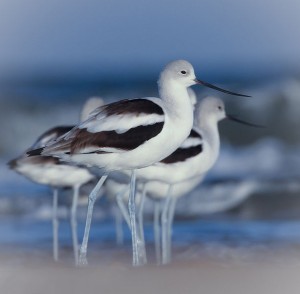I believe Lake Junaluska has spoiled local birders like me. I spent about an hour and a half poking around the lake and nearby areas last Sunday morning. I ran into a few other birders and we were all of the same opinion – the lake was dead, not much going on. But then I got home and looked at my list. Twenty-seven species for an hour and a half of birding in mid December is not a terrible showing.
Waterfowl numbers were low but there were a dozen or more buffleheads bobbing up and down like corks. These beautiful little ducks are cavity nesters. They nest near lakes and ponds in the boreal forests of Alaska and Canada. They depend almost exclusively on cavities created by their metabiotic host, the northern flicker.
I found a couple of wild (migrant) mallards near the recently created wetlands and ruddy ducks are still abundant. American coots and pied-billed grebes were also present.
A spin down below the dam turned up a belted kingfisher and a great blue heron. A quick stop across Hwy. 19 along Richland Creek produced yellow-rumped warbler, house finch and golden-crowned kinglet among others.
The morning provided a great lesson on just how hit or miss looking for migrants can be. After poking around a little below the dam I decided to drive back by the lake. Rounding a curve, I saw a white speck in the middle of the lake. When I got to a place I could stop I saw it was a gull on the water with a small flock circling above it. By the time I got out of the car the gull on the water had joined the others and they began to circle steadily higher and higher. As best I could tell there were about 15 and they all looked to be ring-billed gulls. They continued to rise in the sky and drift in a southerly direction and soon they were gone. The gulls weren’t on the lake when I first drove around it. Then I took a short drip below the dam – I was gone about 20 minutes and got back just in time to see the gulls leaving.
There was a similar incident with a Ross’s goose a few Sundays ago. It came in with some Canadas and when it was seen phone calls went out. A few nearby birders made to the lake in time to see it before it and the Canadas picked up and much like today’s gulls disappeared. It was on the lake for only a couple of hours. And one day last September an American avocet showed up. It didn’t stick around long either. American avocets nest in the western U.S. and southwest Canada. They winter from the southern U.S. south to Guatemala. The avocet may be a new species for Lake Junaluska, but I’m not sure – I haven’t updated my list in years.
I also got great looks at an immature red-shouldered hawk. The bird stayed perched for a good long look because it didn’t want to get airborne. There was a crow perched on the other side of the tree just waiting.
So it may have been a slow day by Lake J standards but there was still plenty to see and it only takes one whirr of wings or one splash down to make a slow day an exceptional day at the lake this time of year

